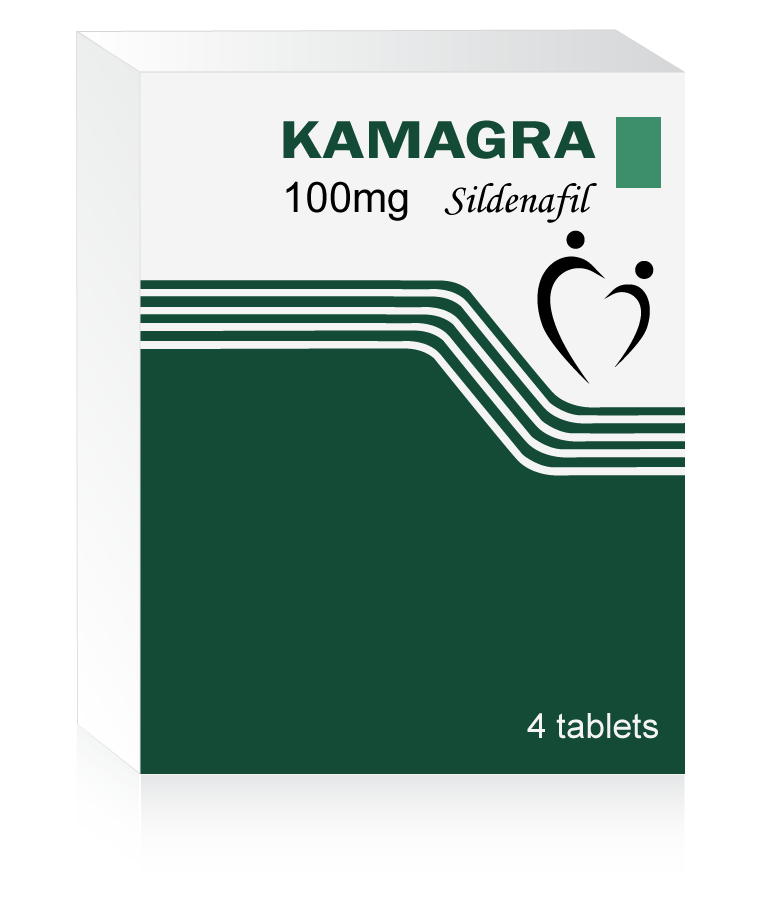
Kamagra
Drug Name: Kamagra
Active Ingredient: Sildenafil

Dosage:
Form: Tablet
Type: Barnd
Prescription Required: ![]()
Availability: In Stock

Kamagra is intended to improve erectile function by increasing blood flow to the penis during sexual stimulation. It works by inhibiting the enzyme PDE5, which is responsible for the degradation of a compound called cyclic guanosine monophosphate (cGMP). By inhibiting PDE5, sildenafil helps to maintain higher levels of cGMP, which relaxes the smooth muscles in the blood vessels of the penis, allowing for increased blood flow and facilitating an erection.
It is important to note that Kamagra is not an approved medication in many countries, including the United States. It is often marketed as a generic version of Viagra and is available online without a prescription. However, purchasing medications from unregulated sources carries significant risks, as the quality, safety, and efficacy of these products cannot be guaranteed.
How to use
Kamagra is a medication used to treat erectile dysfunction (ED) and pulmonary arterial hypertension (PAH). Here are some general guidelines on how to use this drug:
- Take the medication orally with a glass of water, usually about 30 minutes to 1 hour before sexual activity. It can be taken with or without food, but note that a high-fat meal may delay the onset of the medication's effects.
- Kamagra works best when there is sexual stimulation. It helps to relax the blood vessels in the penis, allowing for increased blood flow and facilitating an erection. It does not automatically induce an erection.
- The effects of Kamagra can last for several hours, typically around 4 to 6 hours. Avoid taking more than one dose of this drug within a 24-hour period.
Dosage
The dosage of Kamagra can vary depending on the specific condition being treated and individual factors. Here are some general guidelines regarding dosage:
For erectile dysfunction (ED):
- The typical starting dose is 50 mg, taken approximately 30 minutes to 1 hour before sexual activity.
- Depending on the individual's response and tolerability, the dose may be adjusted to 25 mg or increased to a maximum of 100 mg.
For pulmonary arterial hypertension (PAH):
- The recommended dose for PAH is usually 20 mg, three times a day.
Medicine is available in different strengths, including 25 mg, 50 mg, and 100 mg tablets. The appropriate dose will depend on factors such as the severity of your condition, other medications you may be taking, and your overall health.
Kamagra should be taken orally with a glass of water. It can be taken with or without food, although a high-fat meal may delay the onset of its effects.
If you miss a dose of Kamagra, take it as soon as you remember. However, if it is close to the time for your next dose, skip the missed dose and continue with your regular dosing schedule.
Side effects
Kamagra, like any medication, can cause side effects in some individuals. It's important to note that not everyone experiences side effects, and their severity can vary. Here are some common side effects:
- Headache: Headaches are one of the most common side effects of Kamagra. They are typically mild to moderate in intensity.
- Flushing: Some individuals may experience facial flushing or redness of the skin.
- Indigestion and Upset Stomach: Kamagra can cause digestive issues such as indigestion, stomach discomfort, or acid reflux.
- Nasal Congestion: Medicine may cause nasal congestion or a stuffy nose.
- Dizziness or lightheadedness: Kamagra can occasionally cause dizziness or a feeling of lightheadedness.
- Vision Changes: Rarely, Sildenafil may cause temporary changes in vision, such as blurred vision, sensitivity to light, or a blue-green tint to vision.
- Back Pain and Muscle Aches: Some individuals may experience back pain or muscle aches as a side effect of Kamagra.
- Priapism: Priapism is a rare but serious side effect characterized by a prolonged and painful erection that lasts for more than four hours. Seek immediate medical attention if this occurs.

Storage
Kamagra should be stored according to the following guidelines:
- Keep tablets or oral suspension in their original packaging or container to protect them from light and moisture.
- Store medicine at room temperature, preferably between 20°C and 25°C (68°F and 77°F).
- Keep the medication away from excessive heat or cold. Avoid storing it in areas such as the bathroom or kitchen, where it may be exposed to moisture or extreme temperatures.
- Keep Kamagra out of the reach of children and pets to prevent accidental ingestion.
Overdose
If you suspect an overdose of Sildenafil, it is important to seek immediate medical attention or contact your local poison control center. An overdose of Kamagra can be serious and potentially life-threatening. Here's what you should know about overdose:
- Signs of overdose: Symptoms of an overdose may include severe dizziness, fainting, priapism (prolonged and painful erection), severe headache, blurred vision, confusion, rapid heartbeat, or difficulty breathing. It is important to be aware of these signs and seek prompt medical help if they occur.
- Seek medical help: If you or someone else has taken more Kamagra than prescribed or is experiencing symptoms that indicate an overdose, call emergency services immediately or go to the nearest emergency room.
- Do not delay seeking medical assistance: Time is crucial in case of an overdose. Do not hesitate to seek help, as prompt medical intervention can be vital in managing the situation.
- Treatment: Treatment for Kamagra overdose will depend on the severity of the symptoms. Healthcare professionals will provide supportive care to manage the symptoms and stabilize your condition. This may include monitoring vital signs, administering medications, providing intravenous fluids, or performing other appropriate medical interventions.




